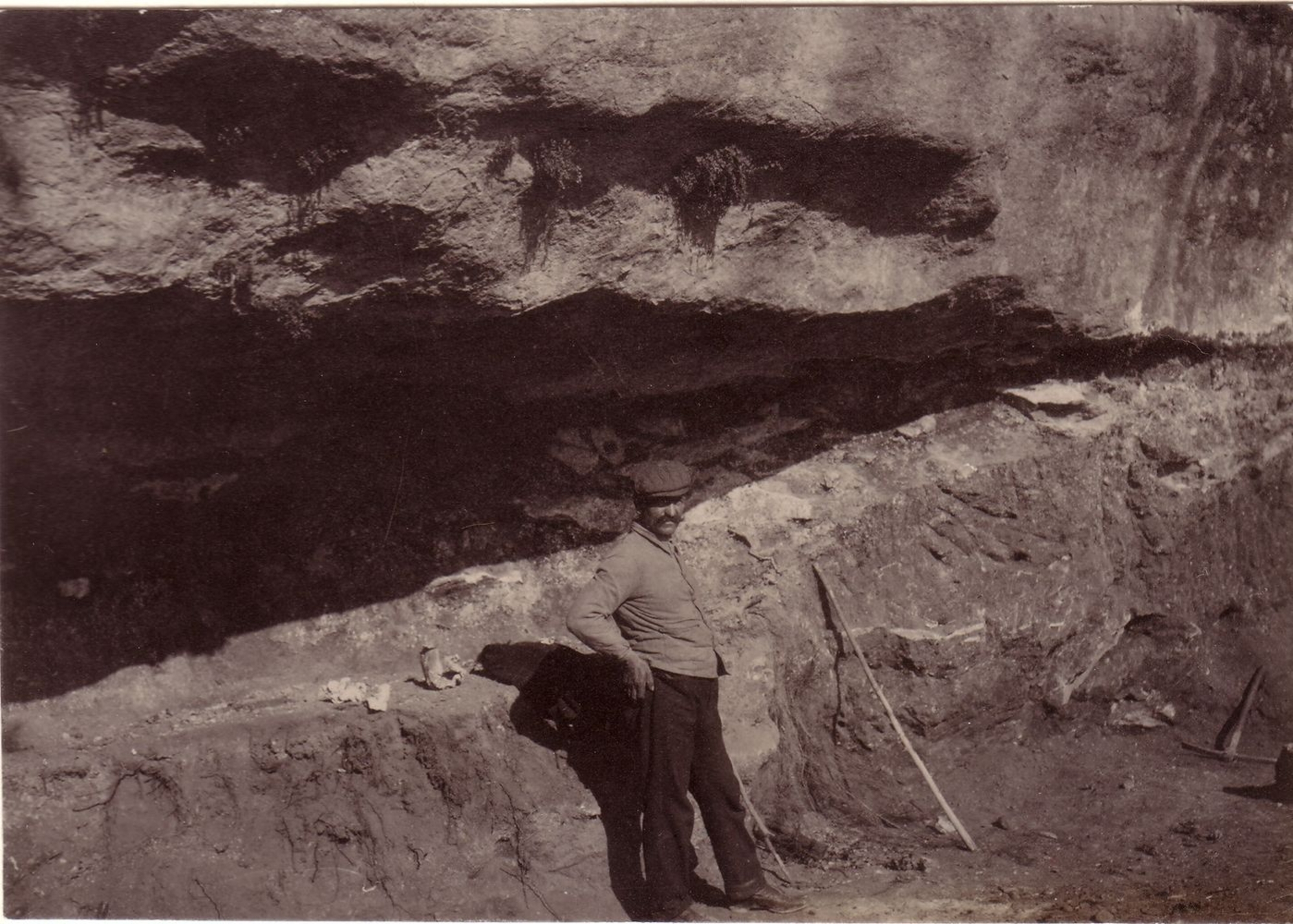
The shelter faces south, and is located on the upper part of a cliff on the right bank of the valley.
It extends across 16.5 metres and may be divided into two zones : to the left is the shelter, and to the right is a small "alcove". The overhang measures three metres high at the highest point. The outline of the cliff indicates that the overhang did not stand out. The "alcove" is 5 metres long by 4 metres deep.
Chrono-stratigraphy
The site's occupation is uncertain. The results of the Lalanne excavations are inconclusive – the stratigraphy is difficult to decipher and part of the archaeological material has disappeared. Three archaeological layers have been identified. Nevertheless, a study of the material, with help from dating techniques, reveals that the shelter was visited over a period that spanned five separate cultures, from the Solutrean to the Azilian, with a significant occupation during the Middle Magdalenian (13,000–11,500 years BP).
Archaeological context
Given the disappearance of part of the material, it is difficult to describe the various occupations. The thickness of the archaeological layer, along with the abundant and varied archaeological material – including artisanal and symbolic artefacts and animal remains – provide so many indications that the site was heavily occupied. The presence of the grave of a young woman, dated to the Middle Magdalenian, gives this site a fundamental symbolic function.
Fourteen animals sculpted in low relief are elements in a frieze on the back wall of the shelter. They have been affected by the removal of the cover layer. They are remarkable for their size (the largest measures 2.2 metres) and the depth of the relief carving, which exceeds 20 cm on average. A recent re-examination has revealed three successive decorative phases. An initial ensemble of large bas-reliefs of animals facing left was replaced by large-scale horses and bovids facing right, to which were added small bison sculpted in lower relief.

